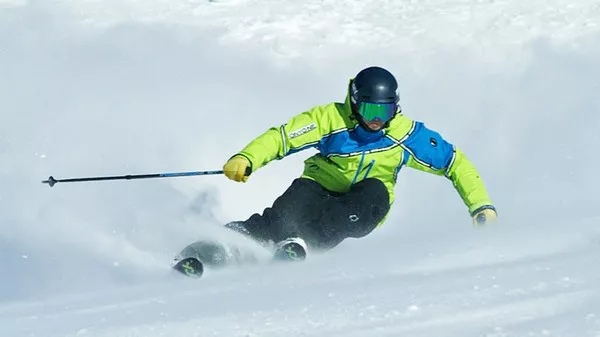As winter enthusiasts hit the slopes each year, they encounter a diverse array of skiing techniques, each offering its own blend of thrill and skill. Among these techniques, carving skiing stands out as a pinnacle of precision and performance. Characterized by smooth, arcing turns executed with finesse and grace, carving skiing represents the epitome of mastery on the mountain.
Understanding Carving Skiing
At its core, carving skiing involves utilizing the edges of the skis to grip the snow and create clean, curved turns. Unlike traditional skiing techniques that rely on skidding or sliding, carving skiing emphasizes edge control and body positioning to maintain a consistent arc throughout each turn.
The key to carving skiing lies in the interaction between the skier, their equipment, and the snow surface. By properly angling the skis on edge and applying pressure through the turn, skilled carvers are able to achieve remarkable speed and agility while maintaining full control over their trajectory.
The Anatomy of a Carving Turn
To appreciate the intricacies of carving skiing, it’s essential to dissect the mechanics of a carving turn. At the onset of the turn, the skier initiates the movement by shifting their weight and edging the skis into the snow. This action engages the edges of the skis, which bite into the snow surface and create a stable platform for the turn.
As the skier continues through the arc of the turn, they maintain a balanced stance while actively guiding the skis along the desired path. By subtly adjusting the pressure applied to each ski and fine-tuning their body position, the skier can control the radius of the turn and modulate their speed with precision.
Throughout the turn, the skier remains engaged and attuned to the feedback provided by the snow conditions. By reading the terrain and adjusting their technique accordingly, expert carvers are able to seamlessly adapt to changing slopes and optimize their performance in any environment.
Mastering the Art of Carving
Achieving proficiency in carving skiing requires a combination of technical skill, physical conditioning, and mental focus. Skiers must develop a keen understanding of edge control, balance, and weight distribution to execute turns with efficiency and precision.
Proper equipment selection also plays a crucial role in carving skiing. Skis specifically designed for carving feature narrower waists and deeper sidecuts, allowing for quick edge-to-edge transitions and enhanced maneuverability. Additionally, the use of high-performance ski boots and bindings ensures optimal power transfer and responsiveness on the slopes.
Training and practice are essential components of mastering the art of carving skiing. Through dedicated repetition and focused drills, skiers can refine their technique and build the muscle memory necessary for fluid, dynamic turns. Working with certified instructors or coaches can provide valuable feedback and guidance to accelerate skill development and overcome challenges.
The Evolution of Carving Skiing
While carving skiing has long been recognized as a hallmark of expert technique, its evolution continues to unfold with advancements in equipment and training methods. Modern ski technology, including innovations in materials and construction techniques, has pushed the boundaries of what is possible on the slopes.
Furthermore, the growing popularity of specialized carving disciplines, such as giant slalom and parallel giant slalom, has fostered a culture of competition and innovation within the skiing community. Athletes at the highest levels of the sport continually push the limits of speed and precision, inspiring the next generation of skiers to strive for excellence.
Embracing the Challenge
For those who dare to embark on the journey of carving skiing, the rewards are plentiful. From the exhilaration of carving through freshly groomed trails to the sense of accomplishment that comes with mastering a challenging slope, carving skiing offers a rich tapestry of experiences for enthusiasts of all levels.
However, the path to carving mastery is not without its obstacles. It requires dedication, patience, and a willingness to embrace failure as an opportunity for growth. Yet, for those who are willing to put in the effort, the journey is inherently rewarding, offering not only improved skiing skills but also a deeper connection to the mountain environment.
Conclusion
In the realm of skiing, carving stands as a testament to the marriage of technique and artistry. Through the precise manipulation of edges and the graceful execution of turns, carving skiers unlock a world of precision and performance on the slopes.
Aspiring carvers are encouraged to embrace the challenge, to push their limits, and to immerse themselves fully in the pursuit of skiing excellence. For within the realm of carving skiing lies a boundless opportunity for growth, discovery, and sheer enjoyment on the mountain.


